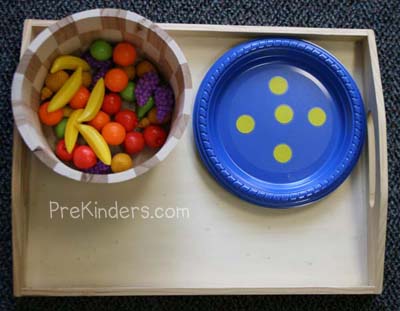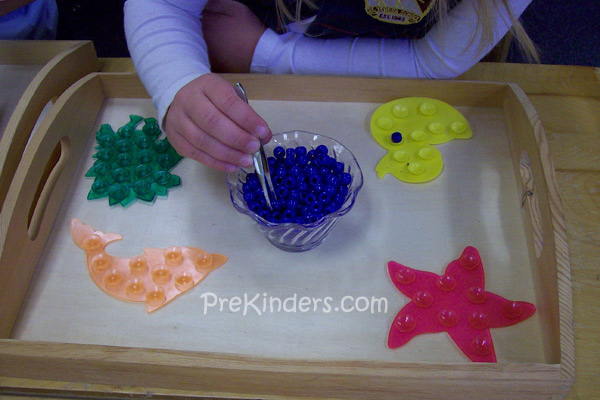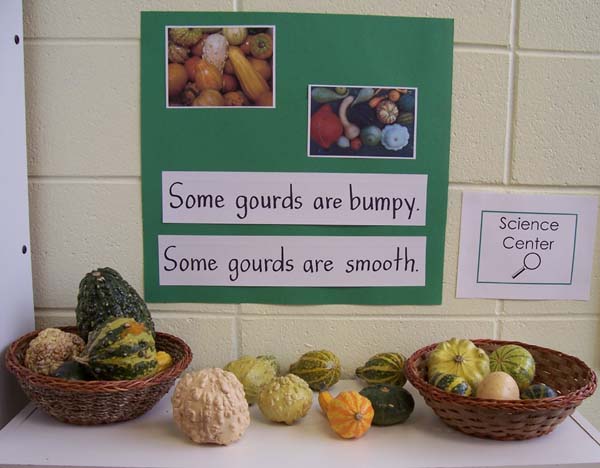Today, I’m excited to be hosting chapter 4 of Literacy Beginnings (Fountas & Pinnell) for the Book Study Blog Party. Previous chapters were hosted by Pre-K Pages (chapter 1), Teach Preschool (chapter 2), and Brick by Brick (chapter 3).
Chapter 4: An Organized, Engaging Environment for Learning
The best sentence in this chapter consists of two words:
Avoid clutter!
I admit to being a neat freak, but I can’t stand clutter in the classroom. Clutter makes a classroom overstimulating and difficult for children (and some adults) to focus in that environment.
In my opinion, there’s no need to wallpaper the walls with displays of colors, shapes, numbers, etc. because having those things on the walls all year (especially if above child eye level) will not help children learn those concepts. Interacting with materials and playing games is how children learn.
This chapter was chock full of information, although at moments it read as though it were written for student teachers or first year Pre-K teachers. I’m sure veteran Pre-K teachers already do many of these things. Still, a lot of valuable information.
One thing I really love about Pre-K is that the environment is just as important as any lesson. In Pre-K, we teach through the classroom environment — by the way we set up and display materials. If materials are arranged in inviting ways, children will be more likely to choose them. Arrangement also effects the way children use materials. Teaching through the environment is much more subtle than a small group lesson or a circle time lesson, but nonetheless the “lesson plan” for our classroom environment is just as important. If we make a mistake in planning the environment, the children will not be able to learn as well or as much.
I like to arrange materials on trays rather than in plastic bins, because I think they look more organized and inviting. Here are some pictures below that show a fine motor tray and a math tray.
Some important points from the book about environment:
- Environment promotes active learning & thinking.
- Physical environment & accessories should reflect diversity.
- Environment should be literacy-rich.
- There should be permanent areas & areas changed through the year.
- Furniture & objects should be labeled with pictures & words.
- Only store materials in the classroom that are used.
Some important points about materials:
- Each material should have a purpose.
- Materials should be changed throughout the year.
- Introduce materials & show how to use them, before putting them out for children.
Have you ever seen a preschool or Pre-K classroom that stayed the same all year long? Nothing ever changed? (I have.) I think it’s very unfortunate for children to have a classroom where they use the same materials for 180 days.
I discovered some places in this chapter where I could improve. The authors recommend the number of books available should be five times the number of children. I don’t think I had that many all at one time last year. I had our open-face bookshelf full, plus four bins of books, but it wasn’t 5 books per child. I also want to add that I think it is important to have certain books that stay out all year long. Other books can be rotated, but there should be some that stay the whole year. For my class, it is usually What Color is Your Underwear, Brown Bear, Brown Bear, Don’t Let the Pigeon Drive the Bus, Three Billy Goats Gruff, and several others. Another interesting suggestion was to have children help name the classroom areas. I’ve never done that. I wonder what names the kids would come up with for centers like math, literacy, and fine motor?
Print in the classroom is also important. Some ways to include print:
- Name charts
- Attendance charts
- Class written stories
- Signs
- Poems & songs on charts
- Alphabet charts
I also like to place short, written messages to children around the room. In our science area, I have sometimes written questions, such as “Can you make music with water?“, “Which objects will roll down the ramp?“, or “Can you fix it?” When the children come into the room in the morning and see a message, they usually run to me and ask, “What does it say?” I have started “pinning” pictures of print in classrooms to a board on Pinterest: Print Rich Classrooms. I will continue to add to that board as I find more pictures. I also have started a board of Classroom Environments.
This chapter taught us that management, order, and organization are important. We need to teach kids how to use materials. Children know what to expect when routines are consistent. Print in the classroom is essential.
I’d love to know: What are some ways you display materials to make them interesting and inviting to children? How do you include print in your classroom?
Have comments of your own about chapter 4? Be sure to post a comment below. If you write a response on your blog, be sure to add your link to the Linky party below. Chapter 5 will be hosted by Vanessa Levin at Pre-K Pages. Don’t miss it!




